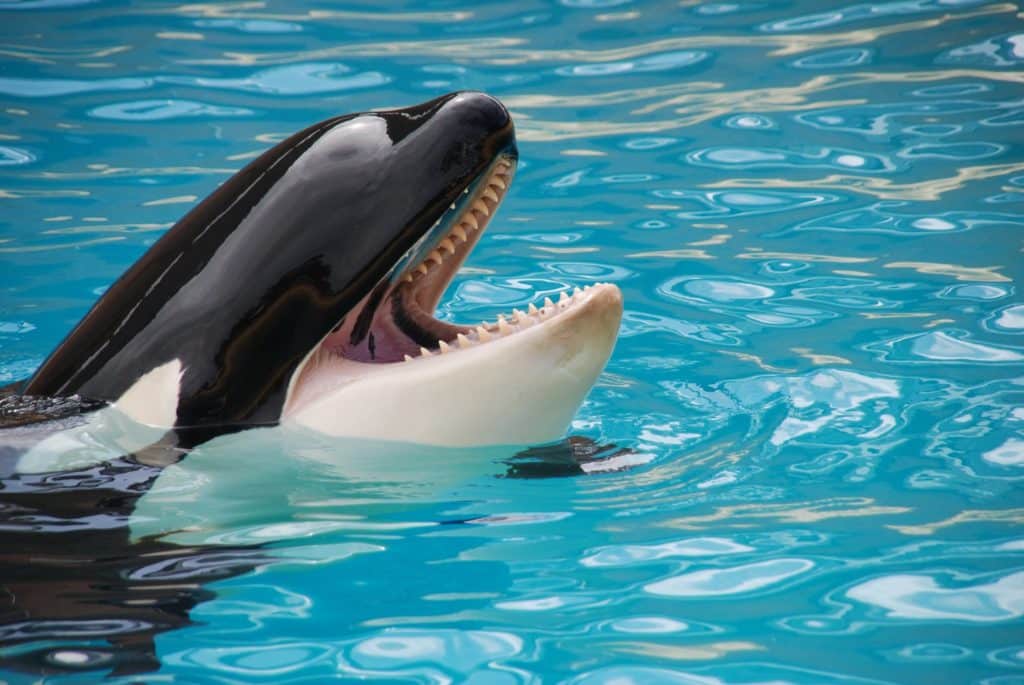4 places when do orcas attack humans. There are lots of places you can go to swim or dive with Orcas. We’ve collected all the information you need to be prepared for your trip. When you think about Orcas, you may picture a vicious hunter who’s merciless and heartless. However, these animals aren’t what many people think they are. Get to know the 4 places when do orcas attack humans.
What do Orcas look like?
Orcas are focal, mammalian sea mammals with a dark black and white coloring. They have long, large dorsal fins that can reach up to two meters in length and a high tower when they’re male. Females are about one fifth smaller and their dorsal fin isn’t even half as tall. Orcas hunt in groups and coordinate their prey with shrewd tactfulness.
They eat a variety of prey including fish, seals, dolphins, sharks, rays, whales, octopuses and squid. However, some groups specialise in just one type of prey such as hunting seals and other marine mammals while others prefer certain types of salmon and have adapted their hunting techniques to these prey over generations.
Table of Contents
Where does the name Killer Whale come from?
Killer whales are some of the largest in the dolphin family. There are a couple different explanations why they have been given the name killer whale or orca. One could be that they have been given this name because unbelievable numbers of devoured animals have been found in stranded or dead orcas. Another is that they were seen hunting other whales and this earned them their name “the killers of whales”.
Orcas also have sharp teeth and a fearsome set, consisting of 40 strong and dense teeth that are perfect for catching prey. Nevertheless, killer whale isn’t the correct term for these animals—because killer whales don’t attack animals indiscriminately, but only kill to feed. Killer whales hunt by going after shoals of fish, but also squid as well as smaller whales and seals.
They often share their prey among themselves with other orcas when hunting together. Killer whales live in all oceans, mainly in cold regions like the Arctic and Antarctic seas. They are considered the health police of the sea because they also eat sick or weaker animals. Orcas weigh between 3-9 tons depending on how big they are and including humans orcas have no enemies, nowhere on Earth do orcas not reign as top predators at top of food chain
What you need to know about Orcas
Killer whales or Orcinus Orca are a type of toothed oceanic dolphin belonging to the Delpinidae family, a family of whales. They roam all over the oceans and prefer coastal areas and higher latitudes to the pelagic ecosystem. Killer whales are apex predators and have no natural predators of their own.
They have a varied diet but it is very hard for them to hunt on fish, sharks, squid, gulls, turtles, penguins and marine mammals such as seals, sea lions, walruses and other whales. They don’t hunt humans but they can hurt them while handling them.
The whale’s life is extremely social and they lead a matrilineal lifestyle which is uncommon in marine animals. They will pass their behavior on to other generations such that each family group consists of one mother whale her offspring and in most cases a third generation.
Is it safe to swim or dive with Orcas?
Orcas owe their name “killer whale” to the early whalers because they reportedly attacked and killed all other animals, even the largest whales. In fact, whalers were so afraid of orcas that they apparently locked them up to study them in captivity. But this is wrong because not a single attack on humans has been documented in the wild.
It is only when orcas are locked up for years in captivity that we see problems with human interactions. All this time will really change the behavior of an orca. Orcas are successful hunters and have a very specific hunting style. They’re highly intelligent animals and close-knit members of their family groups. They don’t have any natural enemies and they’re on top of the marine food chain.
The main reason that there’s never been an attack in the wild on a human is probably because humans aren’t part of their prey scheme or likely well recognized as food by these intelligent animals thanks to their intelligence.
Orca Endangerment
Orcas live in family groups called schools or pods that stay together for life. The school is made up of the offspring, grandparents, and aunts. Everyone in the school shares a common language and hunting habits, making them unique from each other. Schools develop their own dialects and prey types, which often specialize in fish, seals, or whales.
When schools work together to hunt for prey, other species occasionally join in with no fear. Orcas have many hunting strategies depending on location: in Norway and Iceland schools herd herring together to form a large bubble ball then stun one at a time with a blow from their fluke before picking it out of the water as they go around it while slowly sinking down.
Where do Orcas live?
Killer whales are mostly found in cold waters, so they often use their blubber as a protective coat against the chilly temperature. Avoid warm waters and you’re more than likely to see them around the northern Pacific or South Atlantic.
Killer whales are found worldwide, with a variety of deep habitats. They can live in both warm and cold water. The most common place to see one is the arctic and antarctic regions, coastal waters or small bays. You might also find them in the European Atlantic Ocean, Iceland’s herring-rich waters off Norway, or the entire Mediterranean Sea. Globally, these whales live in most bodies of cold water that they call home. The bubbly layer around their body helps them regulate their temperature and maintain an energy supply.
